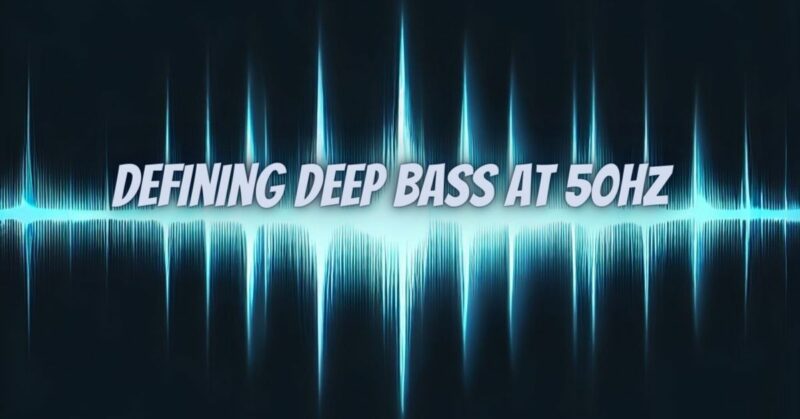In the world of audio and music, the term “deep bass” is often used to describe the lowest and most resonant frequencies that contribute to the immersive and powerful experience of sound. Among these frequencies, 50Hz stands out as a significant threshold. In this article, we will explore the defining characteristics of deep bass at 50Hz, its role in various musical genres, and how it shapes our auditory and emotional experiences.
Understanding 50Hz Deep Bass
Deep bass frequencies are typically categorized as those that fall below 100Hz, with 50Hz occupying a particularly important position within this range. At 50Hz, sound waves oscillate at a rate of 50 cycles per second, creating vibrations that can be felt as much as they are heard. This frequency forms a crucial bridge between the audible and subsonic realms, offering a rich and resonant sonic experience.
The Role of 50Hz Deep Bass in Music
- Foundational Rumble: At 50Hz, deep bass provides the foundational rumble and weight in music. It’s the element responsible for creating that thrilling sensation you feel at concerts or when listening to music on a high-quality sound system. In genres like electronic dance music (EDM), hip-hop, and dubstep, 50Hz deep bass is often a defining characteristic, driving the energy and rhythm of the music.
- Emotional Impact: The presence of 50Hz deep bass can evoke a wide range of emotions in listeners. It can add a sense of power, excitement, and intensity to a track, making it ideal for building anticipation and suspense. In cinematic soundtracks, deep bass at 50Hz is frequently used to heighten dramatic and climactic moments.
- Physical Connection: The physicality of 50Hz deep bass is one of its most remarkable features. When properly reproduced through high-quality speakers or subwoofers, it creates a tangible connection between the music and the listener, often resulting in a visceral, body-shaking experience.
Production and Playback Considerations
- Speaker and Subwoofer Design: To accurately reproduce 50Hz deep bass, audio equipment must be capable of handling these low frequencies. High-quality subwoofers and speaker systems are designed to manage the immense power and vibrations associated with deep bass, ensuring a clean and impactful sound.
- Equalization (EQ): Sound engineers use EQ techniques to fine-tune and balance the deep bass frequencies in a mix. Proper EQing ensures that the 50Hz range is well-defined without overpowering other elements of the music.
- Compression and Limiting: Compression and limiting are used to control the dynamic range of 50Hz deep bass, preventing distortion and maintaining a consistent and powerful presence in the mix.
Deep bass at 50Hz plays a pivotal role in shaping our auditory and emotional experiences in music. It adds depth, resonance, and a physical connection that transcends mere listening. Whether it’s the pounding bass drops in electronic music, the thunderous rhythms in hip-hop, or the intense moments in film soundtracks, 50Hz deep bass enriches our sonic encounters, making it an integral component of the musical landscape. As we continue to explore and innovate within the world of audio, the significance of 50Hz deep bass remains undeniably profound, reminding us of the transformative power of low-frequency sound.


